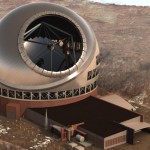I have not had a chance to attend any of the contested case meetings, they are taking place in Hilo on workdays. Following along by reading all of the court documents is almost as good, maybe better. Big Island Video news has also posted quite a few videos of the proceedings where you can watch and get a feel for the tone and process of the hearings.

It is clear that the telescope opponents have a couple basic strategies, neither of which address the issues. First is simply to delay and obstruct. Every decision is appealed and contested, from who is party to the case, to the selection of the hearing officer herself. Attempts to limit the discussion to the issue at hand have been vigorously contested by those who have other agendas.
One observation is that witness lists of telescope opponents are extensive, 39 persons on the Mauna Kea Anaina Hou (Doc-103 and Doc-104) list alone. To be fair, many of the the opponents do only have a few witnesses to call, but the sheer number of participants makes the resulting numbers a bit excessive. Reading through the various lists I fail to see where each witness will bring unique testimony to the case. In contrast the University and other supporters have very brief witness lists with only a handful of witnesses requested. Certain names do stand out… Dr. Sai, a well known sovereignty proponent. UH Chancellor David Lassner is present. Even Governor Ige has been listed, a request that is already subject to extensive legal wrangling.
A common theme in both the hearing room behavior and in the document opponents claim that they have been subject to personal attacks or harassment. Claims are made that they are “under duress” despite the fact that participation in this proceeding is entirely voluntary. Judge Amano has gone out of her way to explain methods by which opponents could participate in the hearings without being full parties in the process and subject to the associated paperwork and attendance burdens.
Another example of this is the Temple of Lono’s accusations (in Doc-179) that “In its DOC-135, the University launched a sweeping ad hominen attack on the Temple of Lono”. Going back and reading Doc-135 one finds a reasoned and well cited discussion of religious use claims versus land use decisions. There is nothing personal or “ad hominen” in the discussion, it is simply a legal review of religious use and assertions of control over public land.
The second strategy pushed by several parties in the hearings is to use the case to forward the Hawaiian sovereignty movement. These hearings have no jurisdiction over the issue, not of land ownership, not of Hawaiian status. Multiple claims have been made that the state or DLNR have no jurisdiction over the lands in dispute.
Below you will find proof from the State Constitution, the Act Admitting Hawaii as a so-called State in 1959, and the Organic Act of 1900 demonstrating that the Island of Hawaii is not within the so called State of Hawaii. Kamahana Kealoha in Doc-191
In this argument is another reference to one of the few times the question of state authority has been brought up in a higher court. In State of Hawai‘i v. Dennis Kaulia, a criminal case where the defendant claimed the state had no authority over his conduct, the court addressed the question directly. In the case the state supreme court unambiguously affirmed the legality of and authority of the State of Hawaii.
I have to give my respect to Judge Amano. A number of Hawaiian activists have demonstrated nothing but disrespect for the judge and the proceedings, staging antics that leave most observers cringing. Through it all the judge has been professional and respectful to all of those involved.

